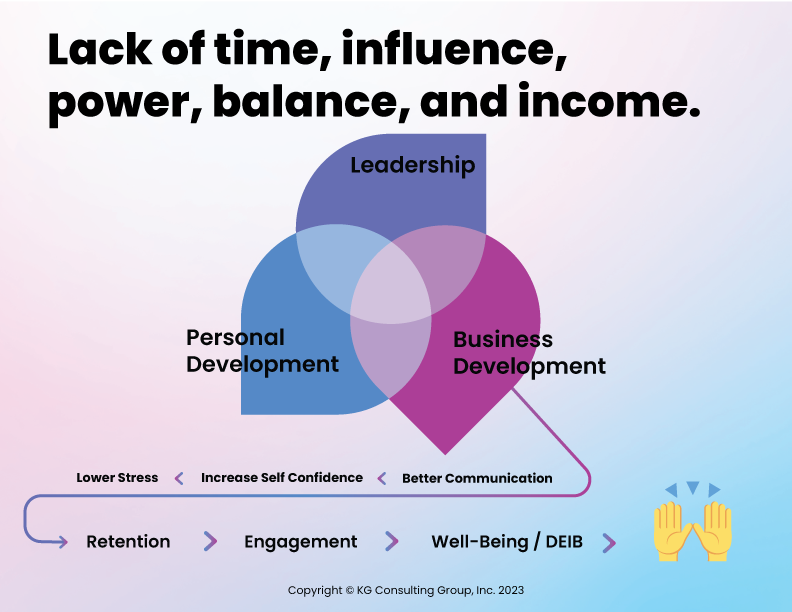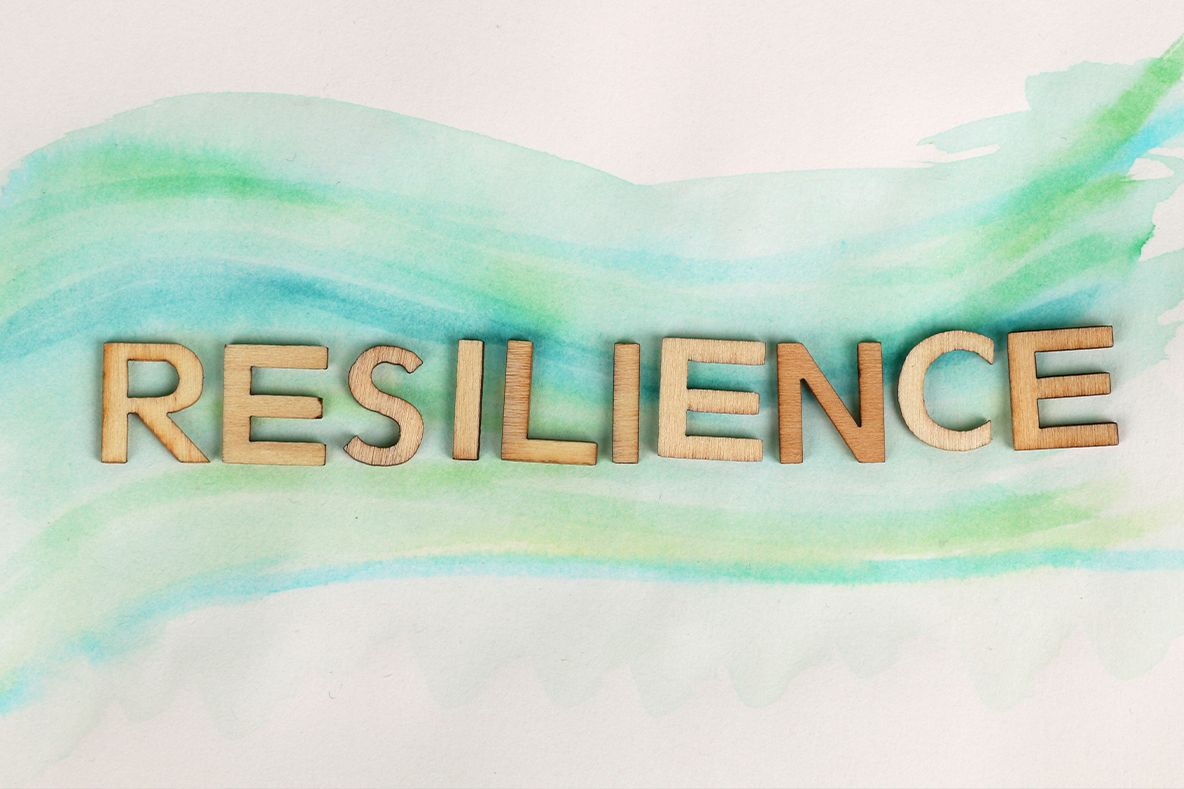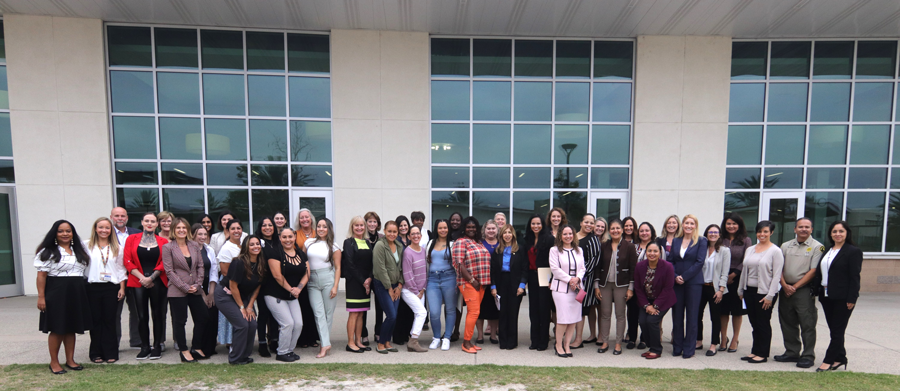Written by Katy Goshtasbi
Posted on: August 15, 2024
Share This

“This article was first published in the ABA Law Practice Division Webzine on August 14, 2024”.
When I ask lawyer clients (or any client regardless of profession) what’s their biggest wish or hope for their practice/business/career, they often emphatically exclaim that they wish to have a more smooth and stable one. Who wouldn’t want a smooth and stable practice, business, career? It sounds wonderful.
But what does it really mean to have a smooth and stable practice? Specifically, what do you have to do to achieve this level of success? Just as important, how can your practice success impact your wellbeing and personal life and vice versa? Let’s explore this topic and provide some tips to get you started down this path of success in your practice.
The Problem
When professionals think of having a smooth and stable practice, they often immediately think of hitting a particular revenue goal as the answer. For most of us the focus is on money as the measure of professional success. After all, if we can generate enough revenue that must mean we are successful. This measure of success often fails to self-generate and lead to easy growth, because the foundation for your smooth and stable practice that generates revenues has to be laid first.
Most of my clients are so busy, they can’t find the time or energy to see beyond the everyday practice issues. Doing so would broaden their focus and perspective to practice success indicators, beyond substantive practice success, leading to more money. These success indicators focus on your traits as a human.
Society doesn’t do us any favors by referring to other human traits as “soft” skills. It leaves us believing falsely that “soft” skills are related, perhaps, to a particular gender, or maybe are just a nicety. Stop and think, when did the ability to communicate, solve problems, make sound decisions and inspire others to action become an optional way of being? In fact, our human traits are the way we bond with one another in order to create an atmosphere of trust and safety allowing your professional skills to have a solid foundation from which to shine.
The Solution
Higher revenues are a good indicator, or outcome, of a smooth and stable practice. Before you can get to higher revenues though, your practice has to have a strong emotional footprint, meaning you and your team need to have high emotional intelligence.
With artificial intelligence having such a focus in our personal and professional lives, a natural counter-focus should be on your own intelligence as a human being. Your intelligence can be defined as your cognitive intelligence, or IQ, and your emotional intelligence, or EI.
EI refers to a distinct combination of emotional and social skills and competencies that influence our overall capability to cope effectively with the demands and pressures of work and life — in other words, how we deal with stress, life’s obstacles, deadlines, decision-making, problem-solving, time management, reading the room, and any other myriad life issues that have the potential to relate to and influence our success. All of these are foundational to having a smooth and stable practice that generates high revenues easily. How many times have we seen lawyers not be able to generate revenues and bring in new clients because they can’t manage their deadlines and stressors and can’t communicate effectively? I’ve seen too many instances of this.
While your IQ piques at 17 years of age, your EI grows as you age. There is no correlation between your IQ and EI; that is, just because your IQ is high doesn’t guarantee that your EI is as high, and vice versa.
EI is estimated to account for up to 45% of people’s success in life. When looking at successful leaders and lawyers globally, you’ll find that they have in common extremely high EI. They don’t always show up as managing partners or CEOs. High EI leaders show up as leaders regardless of their positions.
These same high EI leaders generate high revenues/compensation because higher revenues are a natural byproduct of the emotional energy they show up with. This energy is infectious. This energy comes through their emotions, getting others excited to be around them, hire them, support them, respect them, listen to them, etc.
Perhaps Neal Donald Walsh said it best: “Emotion is energy in motion. When you move energy, you create effect. If you move enough energy, you create matter. Matter is energy conglomerated. Moved around. Shoved together. If you manipulate energy long enough in a certain way, you get matter. Every Master understands this law. It is the alchemy of the universe. It is the secret of all life.”
So how can you use emotional energy to create the effect–or matter–of higher revenues? Here are 5 tips to get you started.
1. What’s Your EI Baseline? At the beginning of every client company engagement, I start by providing each lawyer/employee with an assessment that we can then use as a reference point for growth. This assessment serves as a baseline.
2. The hallmark of emotionally intelligent people is that they have high self-awareness. High self-awareness requires you to be able to answer some basic questions about your practice as a baseline. For instance, how are you and your team/employees doing currently in terms of emotional intelligence?
3. If you establish a baseline, you’ll know where to grow from and you can set reasonable and realistic goals and expectations that can be communicated easily to your team to build upon. Otherwise, how would you know where to start and what areas/who on your team needs more focus and attention?
4. What do you feel is the most natural part of your practice? For instance, are you a natural at building your staff and team and leading them? Maybe you are great in the courtroom putting your communication skills to use with the jury, judge and opposing counsel? Knowing the answer to this question will allow you to know where you naturally put your energy easily. This is likely the part of your practice you enjoy the most and can emotionally express well to your audience.
5. Slow and Steady Wins Always. Nothing good happens overnight. Tapping into your and your teams EI is likely a new venture for you, requiring you to look at your career, business and practice from an entirely different angle. Be patient with yourself and celebrate the small wins.
Building a smooth and stable practice is a function of having the foundational element of high EI, not IQ, for you and your team. EI is not a fad or buzzword. It is a function of being human, having, and expressing, emotions. It’s the energy that attracts the right people to your practice through you.
The first step is having self-awareness by knowing that increased revenues are an indicator of a stable and smooth practice and not the path to it. Next tapping into what you naturally put your energy (and emotions) into in your practice is key. Lastly, moving slowly, methodically and with patience allows you to deliberately be the power that fuels your ideal smooth and stable practice.
When you employ these three tips, you will notice that your well-being and personal life has taken a turn for the better, also. The simple reason being that anytime you can emote, you connect with others positively leading to better life outcomes for everyone involved. Emoting is a function of you self-expressing and living your most authentic life. Authenticity doesn’t just draw more money into your practice, it draws harmony and healthy relationships into your life. For a related article on EI, please go here.












